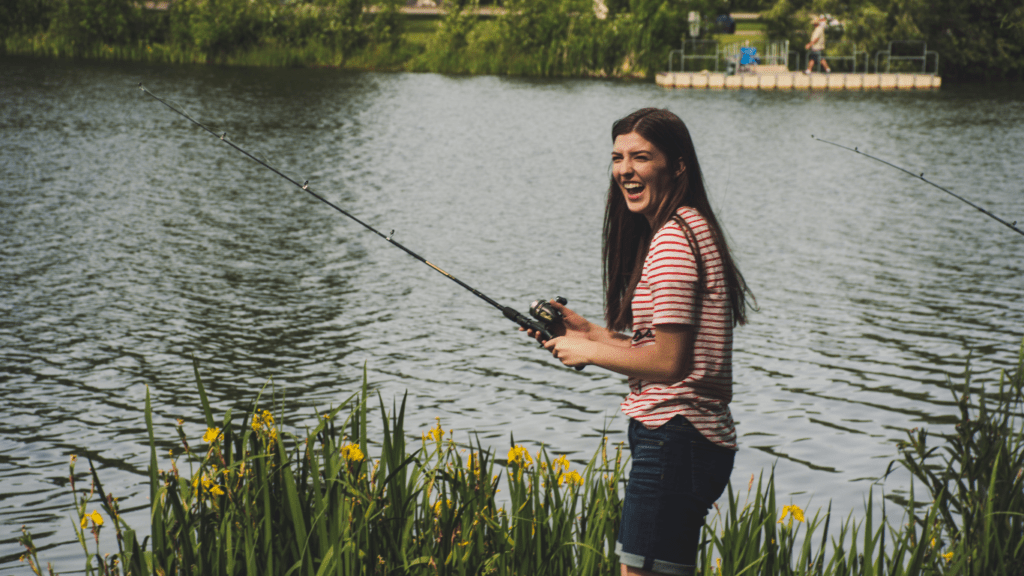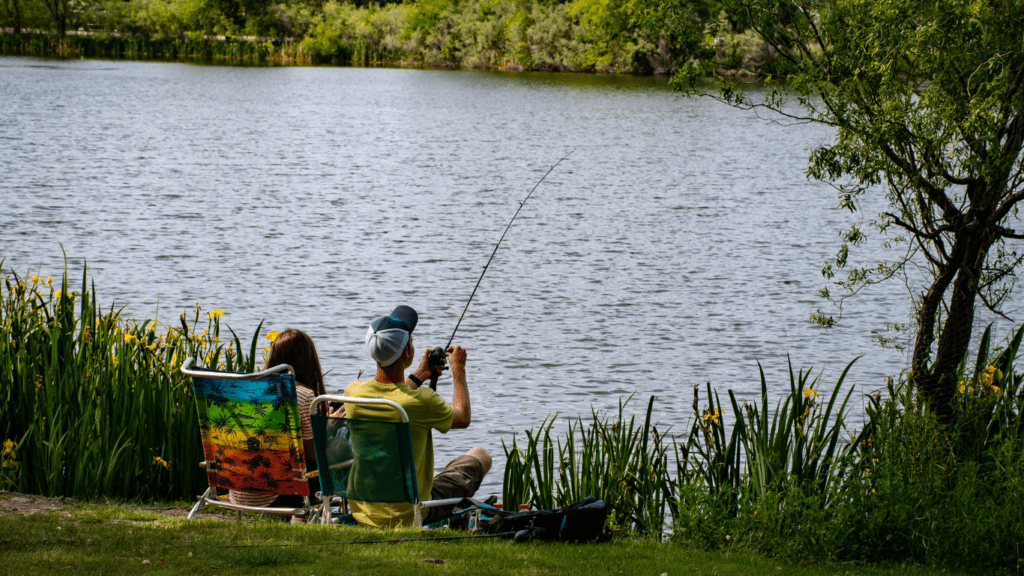As an avid angler, I’ve discovered that fishing isn’t just a hobby; it’s a year-round adventure that evolves with each season. Whether you’re casting your line in the crisp air of winter, the blooming warmth of spring, the sun-drenched days of summer, or the colorful tapestry of fall, each season brings its unique challenges and rewards for fishing enthusiasts. In this article, I’ll share valuable tips and tricks to help you maximize your success no matter the time of year.
Overview of Fishing in Different Seasons
Exploring fishing in different seasons reveals varying experiences that can enrich our angling journeys. From the icy waters of winter to the blooming nature of spring, each season presents distinct challenges and rewards. With tailored approaches for winter, spring, summer, and fall, fishermen can capitalize on the unique conditions each period offers. Throughout the year, adapting strategies to seasonal changes is essential for maximizing success on fishing excursions.
Spring Fishing Tips
When it comes to spring fishing, preparation is key. It’s essential to understand the behavior of fish during this season to maximize your success on the water. Here are some best practices for spring fishing:
- Location is Key: In spring, fish are often found in shallower waters as they move closer to the shore for spawning. Look for areas with cover such as fallen trees, rocks, or vegetation where fish are likely to hide.
- Adjust Your Baits: As water temperatures rise in the spring, fish become more active. Experiment with different baits such as crankbaits, spinnerbaits, or soft plastics to see what attracts the most bites.
- Time Your Fishing: Early mornings and evenings are ideal times for spring fishing when the water is calmer, and fish are more active. Take advantage of these prime hours for the best chance of a successful catch.
- Pay Attention to Water Temperature: Fish are sensitive to changes in water temperature. Monitor the water temperature and adjust your fishing techniques accordingly. Warmer water temperatures often mean fish are more active and feeding.
- Use Lighter Line: In the spring, visibility in the water is often clearer. Opt for lighter fishing line to reduce the chances of fish detecting your presence and improve your chances of a bite.
By following these spring fishing tips, you can increase your chances of a successful fishing trip and make the most of this vibrant fishing season.
Summer Fishing Tips
As an avid angler, I know that summer fishing brings its own set of challenges and rewards. Here are some expert tips to help you make the most of your fishing adventures during the sunny season:
- Early Bird Catches the Fish
Heading out early in the morning or late in the evening can significantly improve your chances of landing a big catch. Fish tend to be more active during these cooler hours of the day, making it the ideal time for a successful fishing trip. - Explore Shaded Areas
During hot summer days, fish prefer cooler waters. Look for shaded areas such as undercuts, overhanging trees, or vegetation along the shorelines. These spots provide relief from the heat and attract fish seeking shelter. - Stay Hydrated
It’s essential to stay hydrated while spending long hours under the sun. Bring plenty of water to keep yourself refreshed and energized throughout your fishing expedition. Dehydration can quickly dampen your fishing spirits. - Use Bright and Vibrant Lures
Summer is the season of abundance, and using bright, colorful lures can mimic the vibrant underwater environment. Opt for lures that stand out against the lush greenery or the clear blue waters, catching the attention of curious fish looking for a meal. - Fish Deep in Clear Waters
In summer, fish tend to move to deeper waters during the day to escape the heat and sunlight. Equip yourself with the right gear to fish deeper and target species that seek refuge in the cooler depths of clear lakes or rivers. - Adapt to Changing Weather
Summer weather can be unpredictable, with sudden storms or intense heat waves. Stay informed about weather forecasts before heading out on a fishing trip. Be prepared to adapt your fishing strategy and find shelter if needed to ensure your safety. - Protect Your Skin
Extended exposure to the sun’s rays can be harmful to your skin. Wear sunscreen, sunglasses, a hat, and lightweight, protective clothing to shield yourself from the sun’s harsh effects. Taking care of your skin is essential for a comfortable and enjoyable fishing experience.
Fall Fishing Tips
As an angler, I know that fall brings exciting opportunities for fishing enthusiasts. Here are some valuable tips to help you make the most of your fishing trips during this vibrant season.
Adjust Your Gear:
Switch to lighter lines and tackle as fish tend to be more cautious in the fall.
Opt for natural-colored baits to match the subdued hues of fall foliage.
Target Transition Areas:
Focus on fishing in transition zones where fish move from deep to shallow waters or vice versa.
Look for structures like fallen trees or rocks that provide cover for fish adjusting to changing water temperatures.
Monitor Water Temperature:
Check the water temperature frequently as fish activity varies with temperature changes.
Fish tend to be more active in warmer waters during the fall.
Early Birds Get the Fish:
Fish are often more active during the early morning hours in the fall.
Take advantage of the dawn bite to increase your chances of a successful catch.
Experiment with Presentation:
Vary your retrieval speeds and depths to find the best presentation for fall conditions.
Consider using slow-moving lures to entice sluggish fish as the temperatures drop.
Stay Flexible:
Be prepared to adapt your strategies based on weather patterns and fish behavior.
Keep an open mind and be willing to switch locations or techniques if necessary.
By following these fall fishing tips, you can enhance your fishing experience and increase your chances of a rewarding catch during this dynamic season.
Winter Fishing Tips
In winter, I adjust my fishing tactics to adapt to the colder conditions and maximize my success. I focus on fishing at a slower pace and targeting areas where fish are more likely to be present despite the lower temperatures.
- Opt for Slow Retrieval: During winter, I find that fish are less active due to the colder water temperature. Therefore, I recommend using a slow retrieval speed to entice sluggish fish that may not be willing to chase fast-moving baits.
- Explore Deeper Waters: In colder months, fish tend to move to deeper waters where they can find more stable temperatures. I target these deeper areas when winter fishing to increase my chances of encountering fish.
- Use Smaller Baits: Fish metabolism slows down in the winter, so I opt for smaller baits that present an easier meal for fish. Downsizing my baits helps attract bites from fish that may be less inclined to expend energy on larger offerings.
- Stay Mindful of Water Temperature: Monitoring water temperature is crucial in winter fishing. Fish are cold-blooded creatures, and their activity levels are directly influenced by water temperature. I pay close attention to temperature changes to adjust my fishing approach accordingly.
- Fish During Warmer Hours: Fishing during the warmer parts of the day can be more productive in winter. I focus my fishing efforts during peak sun hours when the water temperature is slightly higher, encouraging fish activity.
By applying these winter fishing tips, I enhance my chances of a successful fishing outing even in the coldest months.



 Ashleyen Gurganusoon, the founder of Terra Tactician Tactics, has always had a profound passion for the great outdoors and a deep-rooted belief in the power of nature to inspire and transform lives. With a background steeped in adventure and exploration, Ashleyen launched Terra Tactician Tactics to share her love for nature and to create a platform where outdoor enthusiasts of all levels can find valuable resources, expert advice, and the latest trends in outdoor activities. Her vision is to empower people to embrace the challenges and beauty of the wild, providing them with the knowledge and confidence to venture safely and enjoyably into nature.
Under Ashleyen’s leadership, Terra Tactician Tactics has become a trusted source for outdoor and survival enthusiasts worldwide. Her dedication to curating high-quality content on camping, hiking, backpacking, fishing, hunting, and adventure travel reflects her unwavering commitment to fostering a community that shares her passion for the outdoors. Ashleyen's approach is driven by her desire to help others experience the joys of nature and adventure while prioritizing safety, sustainability, and respect for the environment. Through Terra Tactician Tactics, she continues to inspire countless individuals.
Ashleyen Gurganusoon, the founder of Terra Tactician Tactics, has always had a profound passion for the great outdoors and a deep-rooted belief in the power of nature to inspire and transform lives. With a background steeped in adventure and exploration, Ashleyen launched Terra Tactician Tactics to share her love for nature and to create a platform where outdoor enthusiasts of all levels can find valuable resources, expert advice, and the latest trends in outdoor activities. Her vision is to empower people to embrace the challenges and beauty of the wild, providing them with the knowledge and confidence to venture safely and enjoyably into nature.
Under Ashleyen’s leadership, Terra Tactician Tactics has become a trusted source for outdoor and survival enthusiasts worldwide. Her dedication to curating high-quality content on camping, hiking, backpacking, fishing, hunting, and adventure travel reflects her unwavering commitment to fostering a community that shares her passion for the outdoors. Ashleyen's approach is driven by her desire to help others experience the joys of nature and adventure while prioritizing safety, sustainability, and respect for the environment. Through Terra Tactician Tactics, she continues to inspire countless individuals.